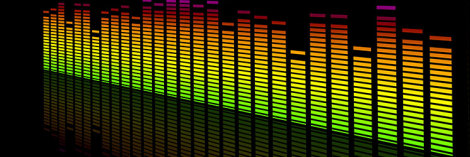There are a variety of ways of controlling LED lights: trailing edge or leading edge, DALI, 1-10V, etc. There are also a huge number of LED lights and LED drivers in our New Zealand marketplace. Our recommendation therefore is always to test any proposed lights/drivers with the lighting control system you intend to use. If this is done, you are less likely to experience the challenges outlined below. If you need some assistance with this, give us a call.
Flickering Lights
 A common problem with LED lights is flickering. When this happens with a ‘controlled system’ the controls supplier is usually the first in the firing line. However flickering LEDs can occur whether or not a control system is utilised, and the problem is usually due to the LED driver either:
A common problem with LED lights is flickering. When this happens with a ‘controlled system’ the controls supplier is usually the first in the firing line. However flickering LEDs can occur whether or not a control system is utilised, and the problem is usually due to the LED driver either:
- Failing to supply a constant current, smoothing out the ups and downs of the sine wave produced by the alternating current, or
- Ripple currents in the driver circuit caused by power conditioning elements.
As a recent article in Lux Review states:
” . . . the simple answer to LED flicker is to ensure that driver design meets the requirements of both a good DC current and appropriate ripple suppression.”
When flickering lights are visible, the client is quick to seek a solution. However the article mentioned above also discussed the possibly greater problem of ‘invisible flicker’ which can’t be seen but is experienced via headaches, migraines, dizziness, general malaise and impaired performance! This ‘invisible flicker’ can be a significant contributor to what is recognised as “sick building syndrome”. Click on the link above to read the full article.
Inrush Current
 LEDs have become popular due to their reduced energy requirements. Although they may shine brightly on seemingly a very low wattage, as above there are a few issues to be aware of. High inrush currents are one of these.
LEDs have become popular due to their reduced energy requirements. Although they may shine brightly on seemingly a very low wattage, as above there are a few issues to be aware of. High inrush currents are one of these.
An electrician may install 10 light fittings described as 20W each. However the ‘inrush current’ when these electronic devices are first ‘woken up’ would likely be 80A. High inrush spikes is a common factor with all LED lights. This is also a common cause for many cheaper sensors failing when connected to LED lights. They have not been designed to cope with the peaks of the inrush current.
If you a planning on controlling LED lights via single standalone sensor, or via a full control system, these high inrush currents need to be taken into account when choosing a product or system to provide that control. We are always happy to talk to you, and discuss suitable options for your control project. Options that won’t entail you returning to replace burnt out equipment! Give us a call


